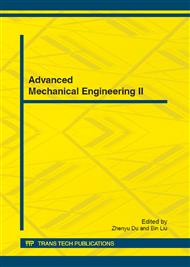p.3
p.8
p.14
p.19
p.24
p.29
p.37
p.42
Comparatively Analysis of Domestic and International Development of Defects’ Safety Assessment for Pressure Vessels
Abstract:
In this paper, the methods of the safety evaluation for pressure vessels containing defects based on “Fitness for Service(FFS)” principle were reviewed. The latest criteria for assessment in both domestic and international fields are introduced. The paper proposes the features and creative ideas of these standards by comparing their advantages and disadvantages. Then, some new methods including the fuzzy theory, probabilistic fracture mechanics, Risk Based Inspection (RBI), Artificial Neural Networks (ANN) and expert system are put forward in current engineering evaluation. At last, the trend of future research in the pressure vessel with defects’ safety assessment is prospected
Info:
Periodical:
Pages:
19-23
Citation:
Online since:
July 2012
Authors:
Keywords:
Price:
Сopyright:
© 2012 Trans Tech Publications Ltd. All Rights Reserved
Share:
Citation:


